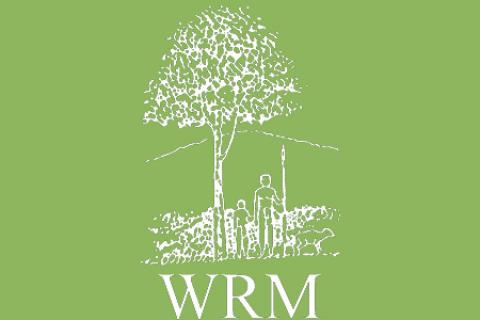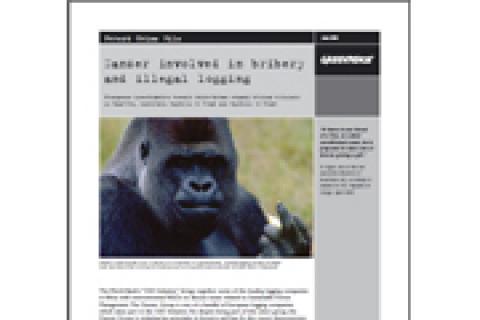Since 1996, in an attempt to control pollution, China's State Environmental Protection Administration has closed thousands of pulp and paper mills. "A significant portion of urban as well as rural water pollution problems came from industry and, in particular, the pulp and paper industry," commented the World Bank in a 2000 report about China's pulp and paper industry.
Other information
In the early 1980s the Indonesian government launched an ambitious forestry plan entitled "Industrial Timber Plantation (HTI) and Pulp Industry Development." In the early stages of its development, pulpwood plantations were claimed to rehabilitate degraded land and to reduce the pressure on natural forests. This misleading propaganda was indeed intended to disguise an ambitious plan of the Indonesian government for the country to become a world major pulp and paper producer.
Established in 1989, Advance Agro Public Company Limited is located in Prachinburi province. Its main business is producing and selling pulp and printing and writing paper. The company’s production capacity of bleached kraft pulp is 175,000 tons per year. It also produces bleached short-fibre pulp for two mills operated under Advance Agro Pulp, with a combined capacity of 427,000 tons as well as printing and writing paper, with an annual capacity of 250,000 tons. Along with its subsidiaries (High Tech Paper and Advance Paper), Advance Agro has an annual production capacity of 500,000 tons.
Just meters beyond the outer wall of Tan Mai Paper mill, a thriving industry exists in the shade of coconut trees. In ponds where rice fields used to lie, local villagers stand chest deep in wastewater from the factory. Young men strain to lift nets out of the ponds, filled to the brim with the catch of the day: paper fiber emitted in the mill's wastewater.
Greenpeace investigation reveals Swiss-German company bribing officials in Cameroon, Democratic Republic of Congo and Republic of Congo.
Download full document as pdf
From May 3 to 14, 2004, governments from around the world met in the hallowed halls of the United Nations in Geneva, Switzerland for the fourth session of the United Nations Forum on Forests (UNFF4). Eleven members of the Global Caucus on Community Based Forest Management attended the first week of UNFF4, with the aim of learning about the UNFF process, and where possible, to advocate for community based forest management. It is fair to say that the Caucus’ expectations for UNFF4 were low in terms of what we anticipated governments would achieve through their deliberations.
Freddy Molina is a board member of the Asociacion Coordinadora Indigena y Campesina de Agroforesteria Comunitaria Centroamericana (ACICAFOC). In English, this translates into the Coordinating Indigenous and Peasant Farmers Association on Community Agro-Forestry in Central America. ACICAFOC is a non-profit, social community-based organization from Central America, which brings together associations, cooperative societies, federations and grass roots organizations lead by small and medium agro forestry producers, indigenous peoples and farmer peasants.
Maybe it's something in the water in Geneva that causes temporary memory loss. Or maybe it's the coffee. Whatever, the participants at the fourth meeting of the United Nations Forum on Forests (UNFF-4) held in Geneva in May seemed to be suffering from a form of collective amnesia.
ENGLAND, UK, APRIL 19TH, 2004.
Today, over fifty environmental and social justice NGOs and other groups sent a letter of protest to the World Bank calling for the closure of its new emissions trading fund, The Prototype Carbon Fund.
Among practices that are emerging in the conservation of Kenya’s forests is the participation of communities in forest management. Although the communities are at the moment being involved at a minimal level, many communities living next to forests now want to make decisions and benefit from sustainable use and management of forests.
This desire for participation has been fueled by provisions of the soon to be enacted Forest Bill that will replace the current Forest Act, as well as the work of non-governmental organizations such as the Kenya Forests Working Group (KFWG).
Forests and woodlands cover about 24% (or 5 million hectares) of the total land area of Uganda, of which 80% is woodland, 19% moist high forest and 1% commercial plantations. Approximately 30% of such forests and woodlands are gazetted mainly as protection forests directly under various forms of government jurisdiction. The 70% outside the gazetted forest domain exist under various forms of private and customary control.
At the end of a National Conference on Community Ownership of Forests (April 2-4, 2004), organised by Jharkhand Save the Forest Movement, National Forum of Forest People and Forest Workers, and Delhi Forum, held in Chalkhad, a forest village in the Indigenous Peoples majority State of Jharkhand in eastern India, around two hundred indigenous Munda (a central Indian indigenous ethnic group) representatives resolved in unison to “Oppose World Bank: And Save Forests”.


